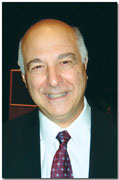 by Bart Basi
by Bart Basi
Publicly traded companies have a ready market for their stock. Some have existed for over a 100 years and have paid dividends in many of them. This is dictated through specific rules and, as such, represent less risk than investing in private companies.
Most private companies have been in existence for a short time and their continued existence depends on factors such as management, local conditions, customer base and economic cycle, to name a few. The behavior of these companies is largely dictated by the owners, who have nearly unmitigated rights in making decisions. This is why the risks involved with small companies are much greater than with large and publicly traded companies.
Closely held companies are quite the opposite of public ones when it comes to their valuation. Private companies do not have a ready market and are much more difficult to value.
The build-up method used to determine a risk factor is based on current 20-Year Treasury Bonds, S&P 500 activity, the size of the company, and the industry. The 20-Year Bond and S&P percentages are easily established. The size factor, not so much. Ibbotsons Valuation Yearbook is an authority on the size premiums that are appropriately used in the valuation industry for determining this aspect of the risk involved in a private company.
While many size factors presented are easily explainable due to the size of the company and the market capitalization, the 10th decile and its split into six authoritative divisions only serves to complicate the job of selecting a risk factor due to the size of the business. It begs the question: What is the most accurate size decile to be used through Ibbotsons’ book?
On page 93 of the 2009 edition, Ibbotsons states, “The greater risk of small stocks does not, in the context of the capital asset pricing model (CAPM), fully ac- count for their higher returns over the long term. In the CAPM only systematic, or beta risk, is rewarded, small company stocks have had returns in excess of those implied by their betas.”
It is important to note there is plenty of controversy in the valuation community regarding the use of the size factor in determining risk of a company using only the risk shown in 10b. The 10b factor was first presented in 2001 but it has not been adopted as the gold standard. In fact, there is little guidance in the book itself as to when and why the decile divisions are appropriately used.
For instance, Ibbotson’s presents seven tables in chapter 7 alone showing size premium rates. On the inside back of the book a table is shown of size premium rates as well. A few years back, there were only five tables. Due to the fact there are multiple tables presented, focusing on one as the only authority would render the others moot. It is clearly not the intent of Ibbotson to render its own work useless.
Even though the split deciles in themselves suggest they are more precise, the fact remains professional judgment must be used in selecting a size premium. To keep by the numbers memorialized in Ibbotson, one would illogically conclude the only best investment ever to be made would be in a small company.
Many owners want their businesses appraised for a whole host of reasons, including divorce, succession, exit planning and buy-sell requirements. There is an impression a simple multiple can be used in determining value, then multiplying that weight against net profit. According to the IRS, and that of the business brokerage community, courts, and other sources of authority, an arbitrary multiple is not acceptable to value a business. The appraiser must make a judgment and use authoritative materials to arrive at a factor to reach a sound conclusion.
Bart Basi is an expert on closely held enterprises. He is an attorney, a certified public accountant and the president of the Center for Financial, Legal & Tax Planning, Inc. He can be reached at 618.997.3436.
